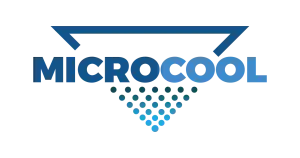MicroCool’s advanced greenhouse misting system creates—and maintains—the conditions plants need to achieve their maximum potential. We work with growers everywhere to help create the perfect greenhouse environment for every kind of crop, in every kind of climate.
Our greenhouse fogging system is the first choice of savvy growers across the globe.
Where Do
I Start?
See how our experts do it. We’ve put together a design guideline for greenhouse cooling and humidity systems.
Why Growers Go with MicroCool
1 Grow year-round in any climate and reduce plant stress
In hot, arid climates, grow successfully through the summer months with the maximum cooling potential. In colder climates, maintain optimal humidity to maintain nutrient uptake and plant health through the heating season. See how humidification reduces plant stress.
2 Optimize propagation
Plants take in carbon dioxide from the atmosphere through their pores. When their pores open, a chain reaction begins. Water is drawn up from the plant’s roots and travels throughout the plant. The water evaporates and goes back into the microclimate. This process is called plant transpiration. When plants transpire, it is like human perspiration. A stoma opens and allows water to escape. Stoma function is connected to the humidity level.
When growing plants don’t have enough humidity, they close their stomata. This means that CO2 intake levels get lower and the plant starts to “stress”. Plants grow slower and produce less food in such conditions like this. If the humidity level is too low, the plant’s protective mechanisms can’t make up for the stress caused by a lack of water in the atmosphere. If there isn’t enough humidity in the microclimate, the plant will eventually wilt and die. This is certainly what you do not want in your garden centers.
Control the propagation of young plants and seedlings by maintaining constant humidity levels with our commercial greenhouse humidifier system. The correct environment allows faster and more even rooting for maximum output. View video showing a commercial propagation greenhouse
3 Even distribution means even growth and production —
Grids of nozzles are positioned strategically throughout the greenhouse. Billions of 10-micron water droplets instantly flash evaporate to cool the air and add humidity, based on your plants’ needs.
4 Anti-drip design
MicroCool’s anti-drip nozzle design ensures that there are no drips or excess drain water that can damage crops if not controlled
5 Fast, easy installation
Stainless steel or flexible nozzle lines provide versatile design options and make installation a breeze.

Today’s horticulture calls for an environment continuously monitored and controlled for optimal quality and production. Your MicroCool greenhouse evaporative cooling system provides the tools you need to maintain consistent temperatures and humidification—integrated with your climate computer to work with your ventilation system and other control elements.

Your Greenhouse Fogging System is Only as Good as the System that Controls It
MicroCool fog systems deliver an unrivaled level of performance, quality and control.
- Integration with climate control systems — Take advantage of the manufacturer’s fog “programs” built into your climate computer.
- Versatility — Wide array of pumps and systems, can meet the needs of greenhouses of any size and complexity.
- Zone and sector controls — Create different conditions in various zones throughout the greenhouse.
- MicroCool precision FOCUS system — Perfect for germination and transplant rooms without any wetting.
- Non-drip nozzles — No marks or discoloration on fruit or leaves.
- 360º nozzle orientation — Allows nozzles to be positioned where you need them, stops nozzle lines “twisting” on startup.
- Integral “last-chance” filter — Protects nozzles from materials that could get into the line.
- Can work with Reverse Osmosis water — Reduces nozzle blockage by keeping them clean, and maintains 100% output of the system.

Custom Control
Plants at high humidity levels may stop transpiring (become dormant) as the osmotic pressure equalizes. Most growers prefer to keep below set humidity levels and experience a few degrees extra cooling rather than excess humidity. MicroCool controllers can be set to operate and achieve maximum cooling without exceeding the high-level humidity setting – enabling you to do just that.

MicroCool Never Leaves You High and Dry
We work closely with you to achieve optimal growing conditions. When used for cooling, for example, the flash evaporation of water droplets can drop surrounding air temperatures by up to 35ºF/18ºC. As the temperature drops, humidity rises. To maintain that lower temperature evenly throughout the greenhouse, air exchange must occur. MicroCool works closely with every grower to determine the ventilation positions and directions to achieve the best results.
Find out More about Greenhouse Cooling and Humidification
As a grower, you understand the importance of temperature and humidity control for optimal production. If your greenhouse’s temperature does not stay at the proper level despite regular ventilation and shading, you’ll need to add cooling so your plants can thrive. Air conditioning (mechanical refrigeration) is often utilized in homes and offices. However, in the agriculture industry, air conditioning is not cost-effective for greenhouses with a large quantity of heat to be reduced. Evaporative cooling, on the other hand, is a simple and inexpensive option for growers in this agriculture sector, as it can help them save money.
For evaporation to occur it needs heat. The surrounding air provides this heat energy, causing the air temperature to fall as water evaporates. At the same time, as the evaporated water converts into water vapor and is added to the surrounding air mass, the humidity of the air rises.The volume of cooling possible with evaporative systems is determined by the humidity of the atmosphere and the air’s original temperature. In a nutshell, the drier the initial air, the more water it can absorb, and hence the lower the final air temperature will be. Warmth also enables more water vapor to be held in comparison to cold weather.
MicroCool’s fog solution is a more dependable option for evaporative cooling systems, which most greenhouses rely on to keep their plants healthy. It gives you greater control of the atmosphere and how you grow your plants. Every indoor grower needs this kind of control when it comes to gardening.
Understanding the Fog System
In greenhouses with natural-ventilation systems, fog system technology is frequently used. These natural ventilation systems just utilize strategically placed vents that don’t require any mechanical fans. The additional airflow resistance produced by evaporative cooling pads makes it difficult for natural-ventilation systems to overcome.
The fog system equipment can be used to evenly distribute cooling throughout the greenhouse, in contrast with a pad-and-fan system. The fog system’s nozzles are placed throughout the greenhouse, resulting in a more uniform cooling pattern. In every 50–100 square feet of the growing area, there will be at least one nozzle.
The Water Properties of the Fog System
To generate very fine droplets that evaporate before they touch the plant surfaces, greenhouse fog systems use a great deal of water pressure (900 pounds per square inch and higher). The usage of water per nozzle is quite low, about 1-1.2 gallons every hour.
To prevent clogging of the small nozzle openings, the water must be free of any impurities. This is why water treatment (filtration and purification) and a high-pressure pump are recommended with all fog systems. Water pressure should not be an issue, as the usually tiny supply lines can handle it. This helps the agricultural sector with growing warm-weather vegetables.
Ultrasonic Properties
In comparison to mechanical ventilation systems equipped with compressed air humidifiers, fog systems create much less noise. This can be a significant advantage for employees and customers who spend long periods of time in commercial greenhouses.
Determining Cooling Efficiency
The optimal cooling that evaporative-cooling systems can provide is determined by the air’s initial temperature and humidity or moisture content. A regular thermometer and a relative humidity sensor are all you need to measure these things. You may use a psychrometric chart to compute the maximum possible relative humidity (100 percent) wet bulb temperature by taking these measurements.
A wet-bulb temperature is the temperature in the atmosphere when water is evaporating from it. When that happens, the air gets cooler. You can calculate how much cooler it will be by calculating the difference between the original temperature and the wet-bulb temperature. The actual temperature drop realized by an evaporative-cooling system is more than likely to be about 80% of the theoretical wet-bulb depression, given that few designed systems are 100% efficient.



